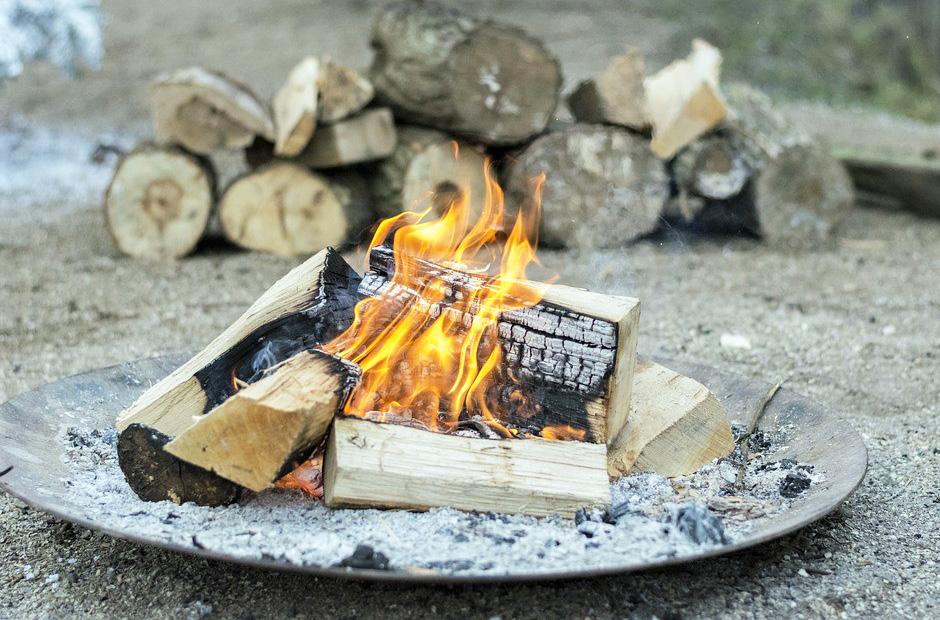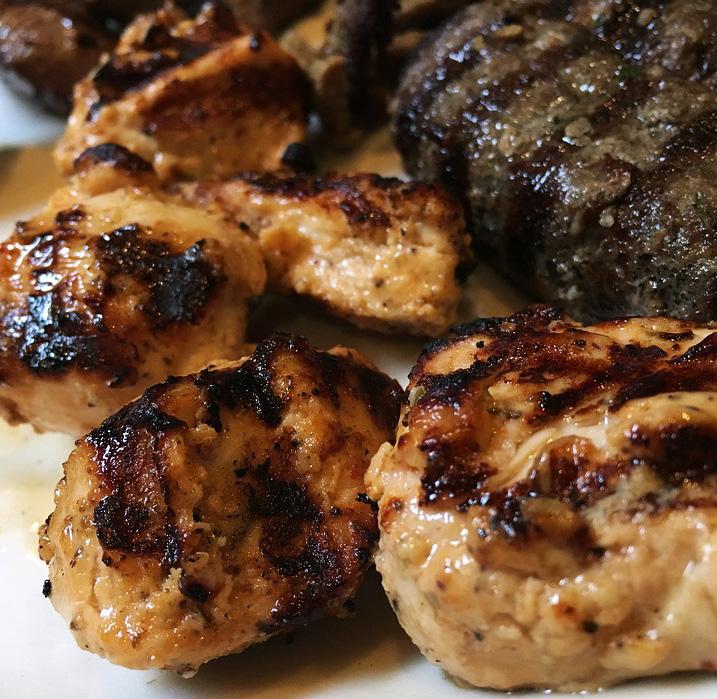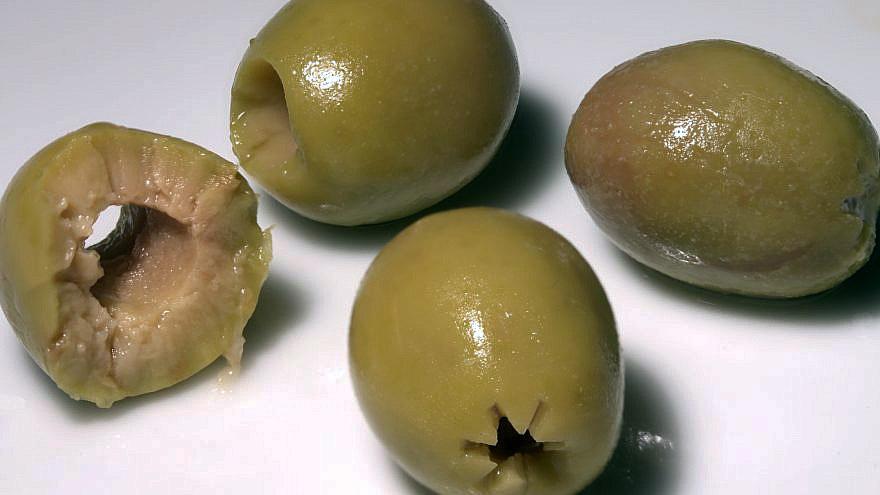
5 minute read
Celebrate Lag B’Omer
LAG B’OMER 2021 Backyard barbecue at home with the fire pit
BY ETHEL G. HOFMAN
KEBAB MEAT

CREDIT: PIXABAY
(JNS) The Jewish holiday of Lag BaOmer falls on the 33rd day of the Counting of the Omer, which occurs on the 18th day of the Hebrew month of Iyar. This year, Lag B’Omer, which begins the evening of Thursday, April 29 and ends the evening of Friday, April 30, will perhaps be more joyful than ever before.
As we head into late spring, along with bursts of sunshine and increasing numbers of those vaccinated, families and friends, feeling a modicum of protection, can finally be together, at least in smaller safe gatherings. It’s OK to heave a sigh of relief with a renewed appreciation of freedom, even escape.
Lag B’Omer is the one day between Passover and Shavuot when certain celebrations, such as weddings, are permitted. One explanation, according to the Talmud, is that a plague that had struck down thousands of Rabbi Akiba’s students ended on that day. It takes place on the 33rd day after the second day of Passover in the midst of the seven weeks between Passover and Shavuot, the time counted on a daily basis (“Lag” is the Hebrew numerical equivalent of “33,” with the “Omer” being counted).
For me, Lag B’Omer has a special meaning. It’s my wedding anniversary – a wedding that almost didn’t happen. As my soon-to-be husband paced anxiously at the top of the synagogue steps, I made the driver go round the block three times to be sure I was making the right decision. And half a century later, I have no regrets and a charmed life with my soulmate.
Because our anniversary fell on Lag B’Omer, we had a huge family celebratory barbecue. My husband, the maven, fired up two grills – one for fast-cooking fish and veggies, and towards the end of that cooking, used on syrup-crusted fruits for dessert. The other was for chicken, ribs and steaks. We had no fire pit then, but we perfected a feast for 20. (See the tried-andtrue tips below.)
Backyard fire pits are now ubiquitous. Kids come armed for a marshmallow roast, while adults can relax and enjoy conversation in the cool of the evening. These days, that’s around a mostly ornamental gas-fueled pit as opposed to fires made from scratch. But take care. Only use such fire pits for items such as s’mores. Anything else, you’ll have the drips from grease and juices causing damage to the inner workings.
To barbecue steaks, burgers and the makings of a meal, you need a woodburning fire pit, basically a campfire ring taken to the next level. It’s meant for burning standard split firewood logs. Build your own? Detailed videos and instructions are available online. Or bring out the grill for the main course.
In Israel, there’s no tossing a naked steak onto the grill. Instead, there’s careful do-ahead preparation. Meats such as lamb are minced together with herbs and spices. The mixture is shaped into patties and grilled or threaded onto skewers. Chunks of marinated meats are also interspersed with tomatoes, onions and other vegetables, and cooked on skewers. This type of cooking showcases the influence of neighboring countries and flavors brought in by immigrants. It all blends perfectly with Israel’s indigenous ingredients. Desserts are nothing fancy, usually fresh, locally grown fruits eaten out of hand and naturally pareve with all that meat being eaten. On Lag B’Omer, peaches, apricots, oranges and apples, fresh figs and dates take on a special flavor when spiked with wood smoke.
For kids, of course (even those with AARP cards), it wouldn’t be a barbecue without s’mores. After a meat meal, there are now lots of choices of dark chocolate (pareve) to use for dessert. Here’s an idea: Set up a “s’mores bar.” See below for variations.

Kebab Tips:
*If using wood skewers, soak in water for 30 minutes. *Always use two skewers rather than just one to prevent food tipping over.
*No need to soak wooden skewers in water. Wrap in foil to keep them from burning up. *Or use metal skewers but make sure you wear long oven gloves to turn. *Pre-marinated kosher meat is available in some markets. *Reserve marinade to brush on the kabobs. *Use tongs to flip the skewers, even if using wooden skewers.
FIRE PITS COME IN ALL SHAPES AND SIZES.
CREDIT: PIXABAY
Olive-and-Cilantro Dip (pareve)
Makes about ¾ cups
Cook’s Tips:
*Coriander is related to the parsley family. The seeds are mildly fragrant and are used in pickling and for use in making mulled wine. *Cilantro, with a pungent flavor, is the leaves of the coriander plant. Use sparingly. *Serve this dip with sesame crackers to nibble on while the kebabs or fish are cooking.
CREDIT: WIKIMEDIA COMMONS
Ingredients:
1 cup pitted green olives ¼ teaspoon bottled minced garlic 1 tablespoon cilantro 2 teaspoons cut up jalapeño pepper or to taste 2 tablespoons fresh lemon juice 2 tablespoons olive oil salt and freshly ground pepper to taste
Directions:
Place all of the ingredients except salt and pepper, in the food processor. Process to a paste. Season to taste with salt and pepper. Spoon into a bowl and serve with crackers or sliced cucumbers and carrot sticks.
Lebanese Kofta (meat)
Makes 6 kebabs
Cook’s Tips:
*All in the name. Kebabs are always cooked on skewers, while kofta may be cooked on the stovetop as well as grilled. *Use all lamb, beef or turkey instead of a beef and lamb mixture. *Substitute three green onions, trimmed for 1 medium onion.
Ingredients:
1 medium onion, peeled and cut in chunks 1 cup parsley sprigs, packed 2 tablespoons mint leaves, packed or 1½ teaspoons dried 2 thick slices of soft bread ¾ pound lean ground beef ¾ pound ground lamb 1 egg 1 tablespoon cumin ¾ teaspoon salt ½ teaspoon fresh ground pepper 1 red bell pepper, cut in 6 wedges 1 yellow bell pepper, cut in 6 wedges
Directions:
Place the onion, parsley, mint and bread in the food processor. Process until onion is finely chopped. Add the beef, lamb, egg and seasonings. Process to mix ingredients thoroughly. Shape into patties about ¾ to 1-inch thick. Thread patties onto skewers alternately with the bell peppers. Grill over hot coals, 4 to 5 minutes on each side or until desired doneness. Note: These may be


